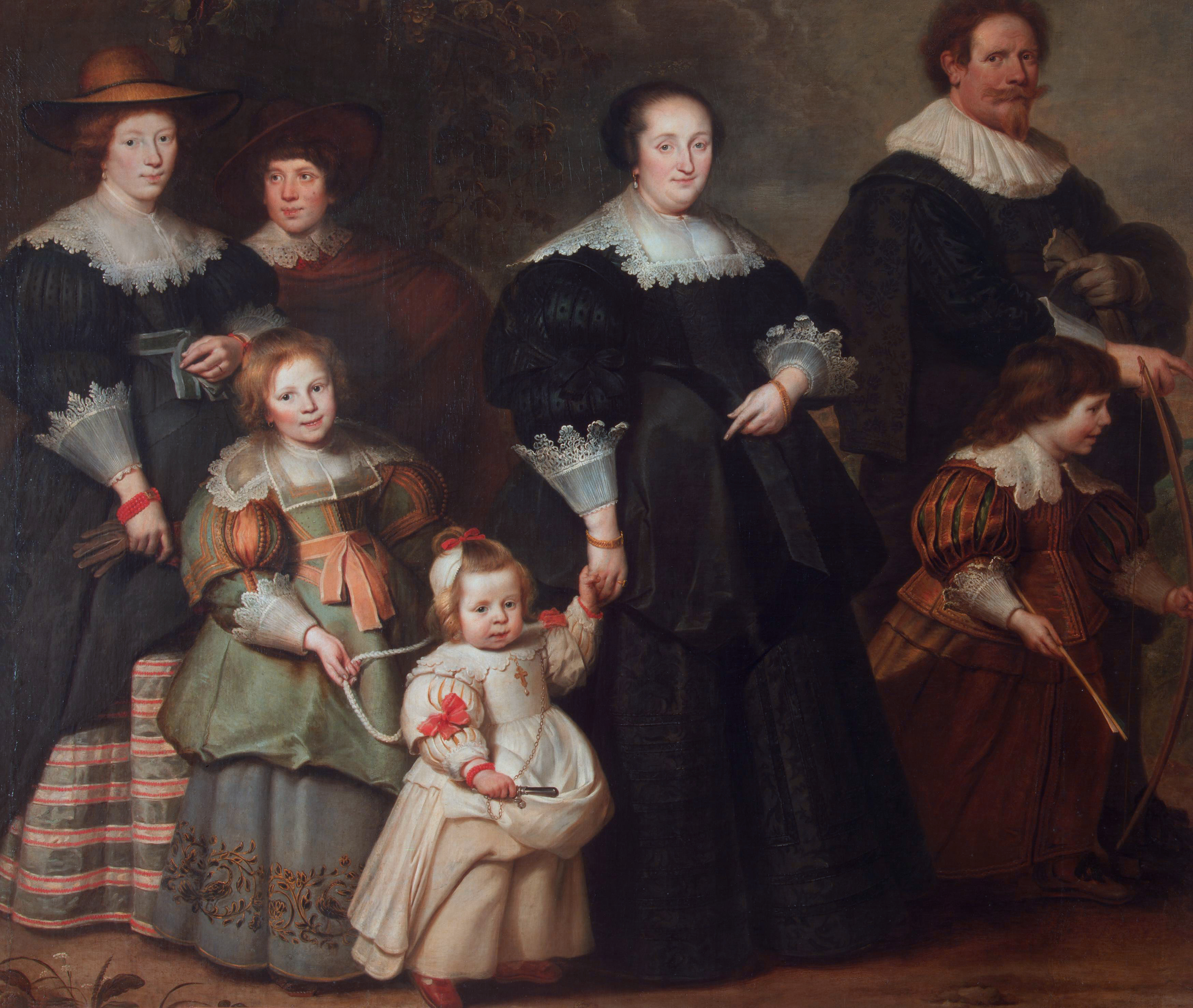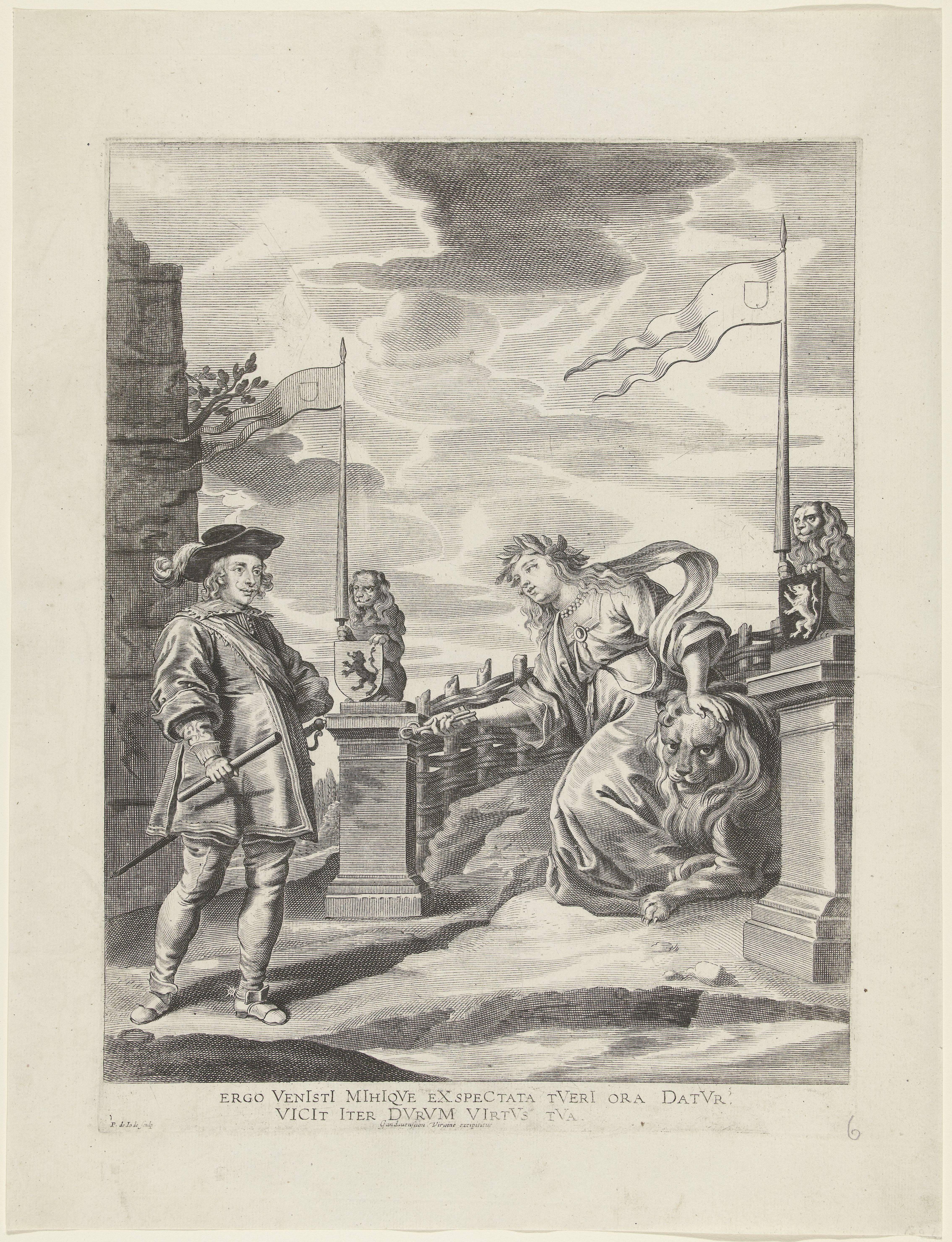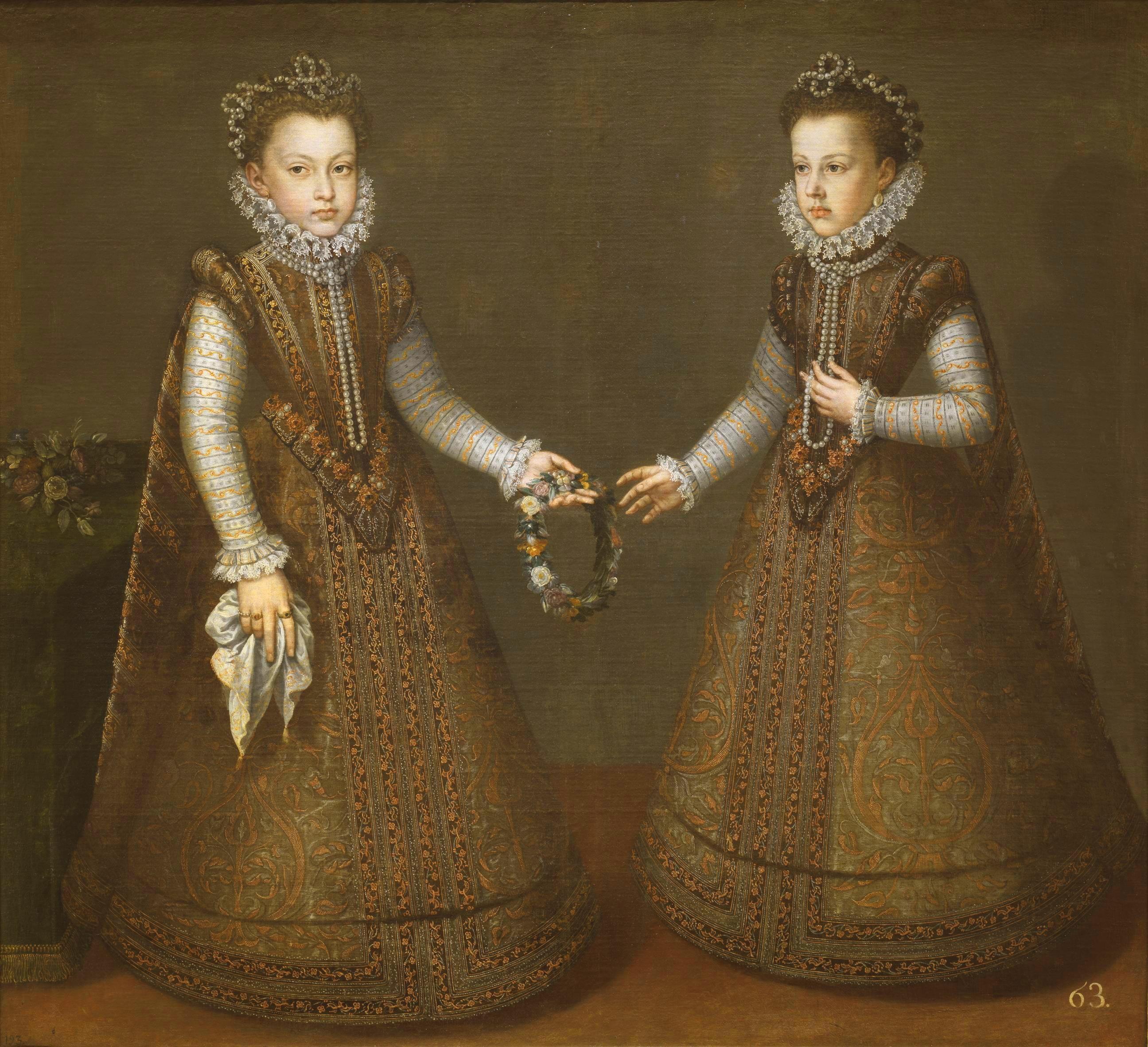|
Cornelis De Vos
Cornelis de Vos (1584 – 9 May 1651) was a Flemish painter, draughtsman and art dealer. He was one of the leading portrait painters in Antwerp and is best known for his sensitive portraits, in particular of children and families. He was also successful in other genres including history, religious and genre painting. He was a regular collaborator with Rubens. Life He was born in Hulst near Antwerp, now in the Dutch province of Zeeland. Little is known of his childhood. His father moved with his family to Antwerp in 1596. Cornelis and his younger brothers Paul and Jan (or Hans) studied under the little-known painter David Remeeus (1559–1626). In 1599 de Vos is mentioned as Remeeus' pupil while on 8 May 1604 he is referred to as the chief assistant of Remeeus.Cornelis de Vos at the [...More Info...] [...Related Items...] OR: [Wikipedia] [Google] [Baidu] |
Cornelis De Vos - Self-Portrait Of The Artist With His Wife Suzanne Cock And Their Children - WGA25310
Cornelis is a Dutch form of the male given name Cornelius. Some common shortened versions of Cornelis in Dutch are Cees, Cor, Corné, Corneel, Crelis, Kees, Neel and Nelis. Cornelis (Kees) and Johannes (Jan) used to be the most common given names in the Low Countries, and the origin of the term Yankees is commonly thought to derive from the term Jan-Kees for the Dutch settlers in New Netherland. Among the notable persons named Cornelis are: * Cornelis Engebrechtsz (c. 1462–1527), painter from Leiden * Cornelis Massijs (c. 1508–1556), painter from Flanders, Belgium * Cornelis Floris de Vriendt (1513/14-1575), architect and sculptor * Cornelis Cort (c. 1533–1578), engraver and draughtsman * Cornelis Corneliszoon (c. 1550–1607), inventor of the wind powered sawmill * Cor Dillen (c. 1920–2009), director of Philips and their CEO in South America * Cornelis van Haarlem (1562–1638), leading Northern Mannerist painter * Cornelis de Houtman (1565–1599), explorer who ... [...More Info...] [...Related Items...] OR: [Wikipedia] [Google] [Baidu] |
Torre De La Parada
The Torre de la Parada is a former hunting lodge that was located in present-day Monte de El Pardo in Fuencarral-El Pardo, near the Royal Palace of El Pardo, some way outside Madrid in the Sierra de Guadarrama. It was mostly destroyed by fire when taken in 1714 by Austrian troops in the War of Spanish Succession, though the ruins remain. History It was first built in 1547-49, with Luis de Vega as the architect. During the years 1635–40 it was a site for a major architectural and decorative project by King Philip IV of Spain who was a great hunting enthusiast. He commissioned the Spanish architect Juan Gómez de Mora to renovate it in 1636, and had it decorated by leading painters, including Rubens and Velázquez, who contributed some of his "jester" portraits, including '' The Jester Don John of Austria'', '' The Jester Don Diego de Acedo'', '' Portrait of Francisco Lezcano'' and '' Portrait of Pablo de Valladolid''. His ''Aesop'' and ''Menippus'' are also thought to ha ... [...More Info...] [...Related Items...] OR: [Wikipedia] [Google] [Baidu] |
Cardinal-Infante Ferdinand
Cardinal-Infante Ferdinand (also known as Don Fernando de Austria, Cardenal-Infante Fernando de España and as Ferdinand von Österreich; May 1609 or 1610 – 9 November 1641) was Governor of the Spanish Netherlands, Cardinal of the Holy Catholic Church, Infante of Spain, Infante of Portugal (until 1640), Archduke of Austria, Archbishop of Toledo (1619–41), and military commander during the Thirty Years' War. Biography Youth Born at the El Escorial near Madrid, Spain in 16091, he was the son of the King of Spain and Portugal, Philip III and II and Margaret of Austria, sister of Emperor Ferdinand II. His older siblings were King Philip IV and III and the French queen Anne of Austria. As his father wished that he pursue an ecclesiastical career, Ferdinand was elevated to the Primacy of Spain in 1619, becoming Archbishop of Toledo. Shortly afterwards he was created Cardinal. The style Cardinal-Infante was a combination of his dignity as Cardinal and his station as a roy ... [...More Info...] [...Related Items...] OR: [Wikipedia] [Google] [Baidu] |
Joyous Entry
A Joyous Entry ( nl, Blijde Intrede, Blijde Inkomst, or ; ) is the official name used for the ceremonial royal entry, the first official peaceable visit of a reigning monarch, prince, duke or governor into a city, mainly in the Duchy of Brabant or the County of Flanders and occasionally in France, Luxembourg, Hungary, or Scotland, usually coinciding with recognition by the monarch of the rights or privileges to the city and sometimes accompanied by an extension of them.Bell & Hawell Information and Leaming: ''Margaret of Austria and Brou: Habsburg Political Patronage in Savoy'' thesis submitted by Deanna MacDonal ... [...More Info...] [...Related Items...] OR: [Wikipedia] [Google] [Baidu] |
Marie De' Medici
Marie de' Medici (french: link=no, Marie de Médicis, it, link=no, Maria de' Medici; 26 April 1575 – 3 July 1642) was Queen of France and Navarre as the second wife of King Henry IV of France of the House of Bourbon, and Regent of the Kingdom of France officially between 1610 and 1617 during the minority of her son, Louis XIII of France. Her mandate as regent legally expired in 1614, when her son reached the age of majority, but she refused to resign and continued as regent until she was removed by a coup in 1617. A member of the powerful House of Medici in the branch of the Grand Dukes of Tuscany, the wealth of her family caused Marie to be chosen by Henry IV to become his second wife after his divorce from his previous wife, Margaret of Valois. The assassination of her husband in 1610, which occurred the day after her coronation, caused her to act as regent for her son, Louis XIII, until 1614, when he officially attained his legal majority, but as the head of the '' Conseil ... [...More Info...] [...Related Items...] OR: [Wikipedia] [Google] [Baidu] |
Henry IV Of France
Henry IV (french: Henri IV; 13 December 1553 – 14 May 1610), also known by the epithets Good King Henry or Henry the Great, was King of Navarre (as Henry III) from 1572 and King of France from 1589 to 1610. He was the first monarch of France from the House of Bourbon, a cadet branch of the Capetian dynasty. He was assassinated in 1610 by François Ravaillac, a Catholic zealot, and was succeeded by his son Louis XIII. Henry was the son of Jeanne III of Navarre and Antoine of Navarre, Antoine de Bourbon, Duke of Vendôme. He was baptised as a Catholic but raised in the Protestant faith by his mother. He inherited the throne of Navarre in 1572 on his mother's death. As a Huguenot, Henry was involved in the French Wars of Religion, barely escaping assassination in the St. Bartholomew's Day massacre. He later led Protestant forces against the French royal army. Henry became king of France in 1589 upon the death of Henry III of France, Henry III, his brother-in-law and ... [...More Info...] [...Related Items...] OR: [Wikipedia] [Google] [Baidu] |
Henri III Of France
Henry III (french: Henri III, né Alexandre Édouard; pl, Henryk Walezy; lt, Henrikas Valua; 19 September 1551 – 2 August 1589) was King of France from 1574 until his assassination in 1589, as well as King of Poland and Grand Duke of Lithuania from 1573 to 1575. As the fourth son of King Henry II of France, he was not expected to inherit the French throne and thus was a good candidate for the vacant throne of the Polish–Lithuanian Commonwealth, where he was elected monarch in 1573. During his brief rule, he signed the Henrician Articles into law, recognizing the szlachta's right to freely elect their monarch. Aged 22, Henry abandoned Poland–Lithuania upon inheriting the French throne when his brother, Charles IX, died without issue. France was at the time plagued by the Wars of Religion, and Henry's authority was undermined by violent political factions funded by foreign powers: the Catholic League (supported by Spain and the Pope), the Protestant Huguenot ... [...More Info...] [...Related Items...] OR: [Wikipedia] [Google] [Baidu] |
Isabella Clara Eugenia
Isabella Clara Eugenia ( es, link=no, Isabel Clara Eugenia; 12 August 1566 – 1 December 1633), sometimes referred to as Clara Isabella Eugenia, was sovereign of the Spanish Netherlands in the Low Countries and the north of modern France with her husband, Archduke Albert VII of Austria. Their reign is considered the Golden Age of the Spanish Netherlands. Isabella was one of the most powerful women in 16th- and 17th-century Europe. Early life Childhood Isabella Clara Eugenia of Austria was born in the Palacio del bosque de Valsaín, Segovia on 12 August 1566. She was the first surviving daughter of King Philip II of Spain and his third wife, Elisabeth of Valois. Her father was reportedly overjoyed at her birth and declared himself to be happier on the occasion than he would have been at the birth of a son. He already had a male heir, Carlos, Prince of Asturias, but father and son had never developed a close rapport and frequently lived in conflict with one another ... [...More Info...] [...Related Items...] OR: [Wikipedia] [Google] [Baidu] |
Albert VII, Archduke Of Austria
Albert may refer to: Companies * Albert (supermarket), a supermarket chain in the Czech Republic * Albert Heijn, a supermarket chain in the Netherlands * Albert Market, a street market in The Gambia * Albert Productions, a record label * Albert Computers, Inc., a computer manufacturer in the 1980s Entertainment * ''Albert'' (1985 film), a Czechoslovak film directed by František Vláčil * ''Albert'' (2015 film), a film by Karsten Kiilerich * ''Albert'' (2016 film), an American TV movie * ''Albert'' (Ed Hall album), 1988 * "Albert" (short story), by Leo Tolstoy * Albert (comics), a character in Marvel Comics * Albert (''Discworld''), a character in Terry Pratchett's ''Discworld'' series * Albert, a character in Dario Argento's 1977 film ''Suspiria'' Military * Battle of Albert (1914), a WWI battle at Albert, Somme, France * Battle of Albert (1916), a WWI battle at Albert, Somme, France * Battle of Albert (1918), a WWI battle at Albert, Somme, France People * Albert (given n ... [...More Info...] [...Related Items...] OR: [Wikipedia] [Google] [Baidu] |


_by_Peter_Paul_Rubens._Ringling_Museum.jpg)




